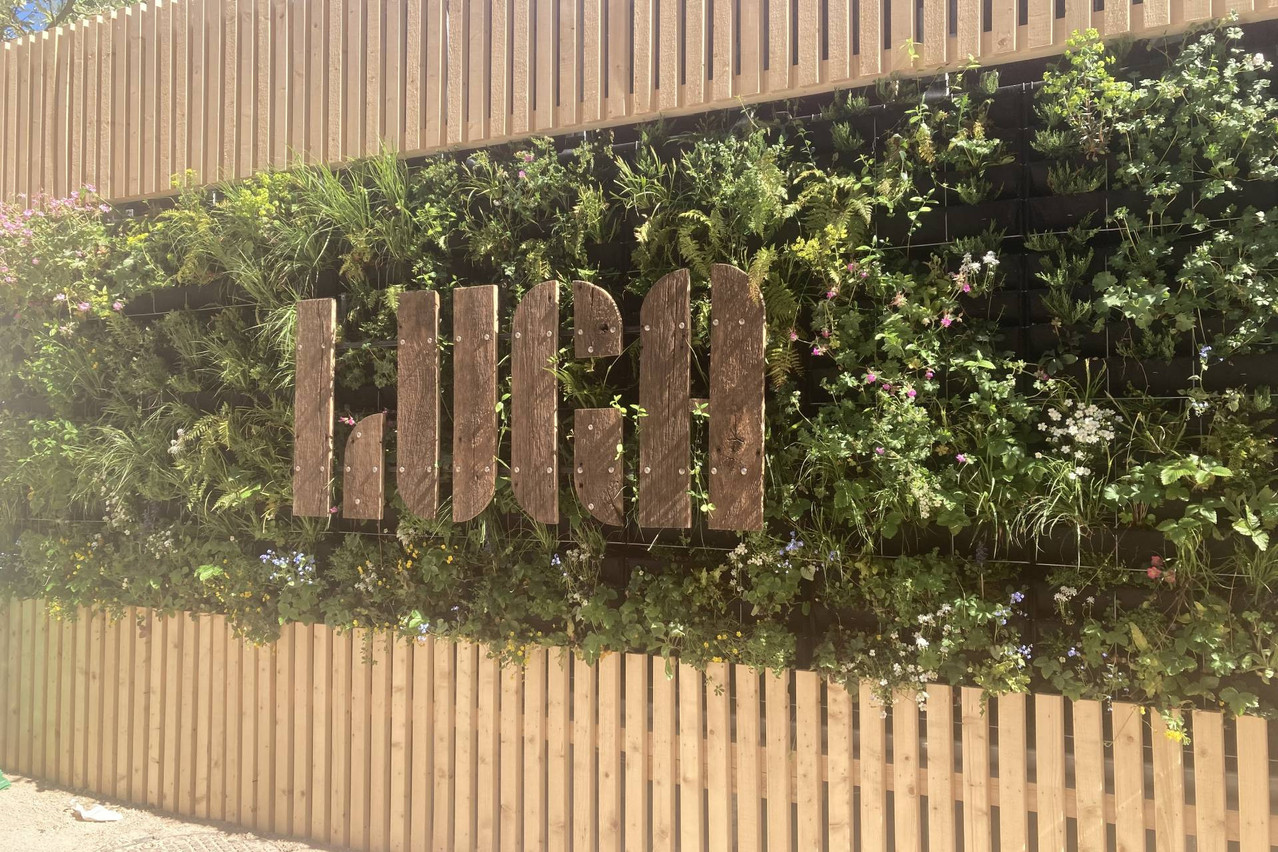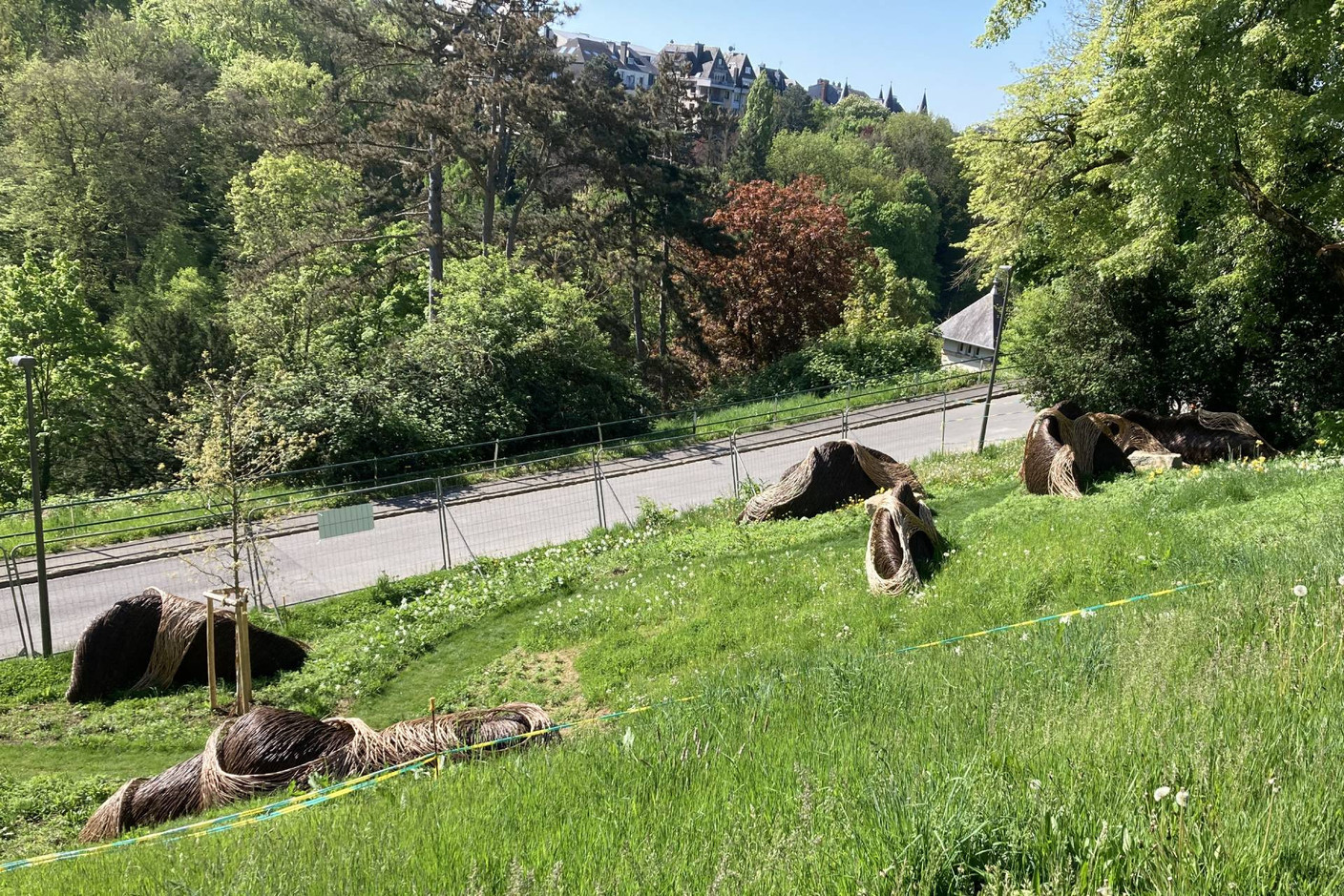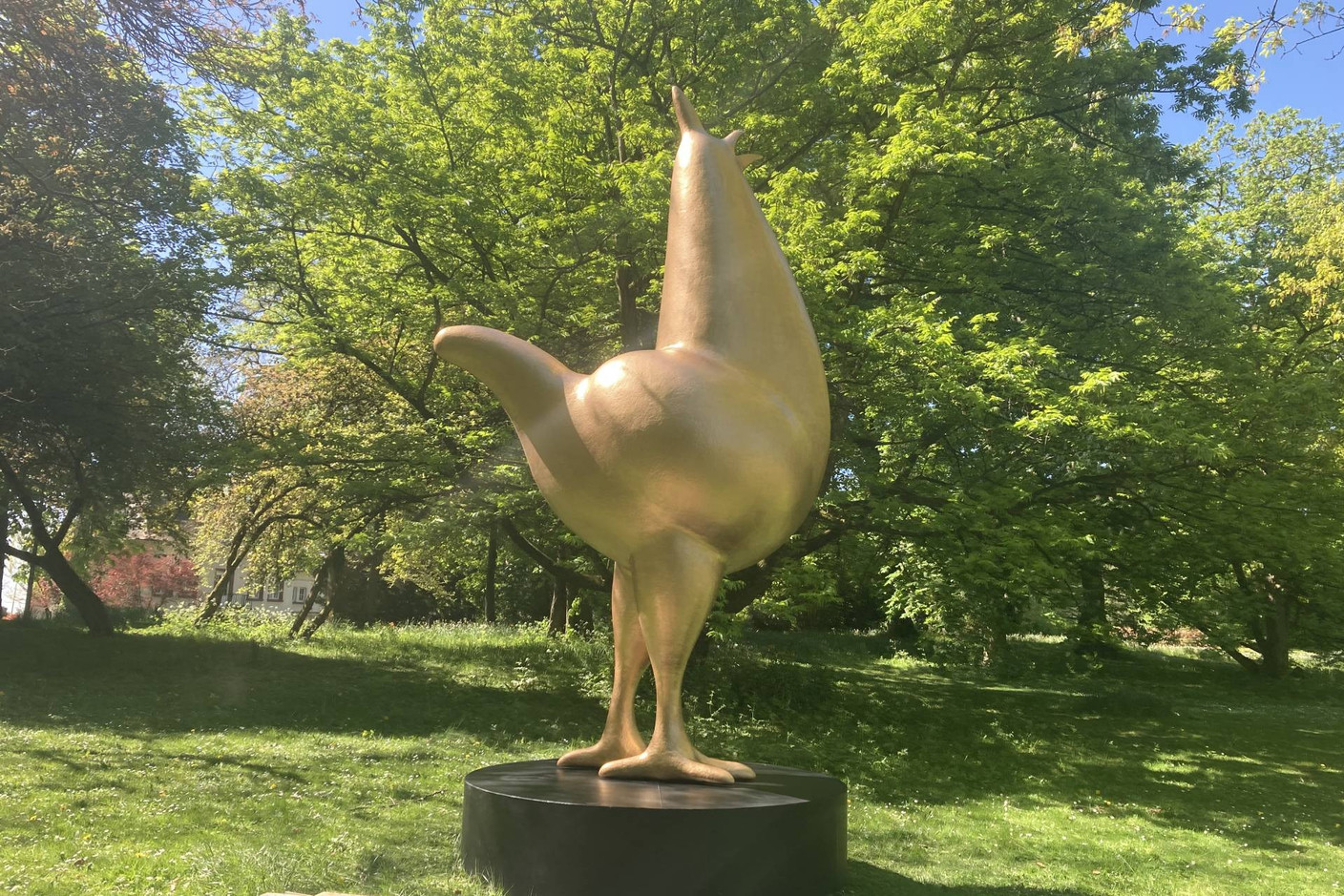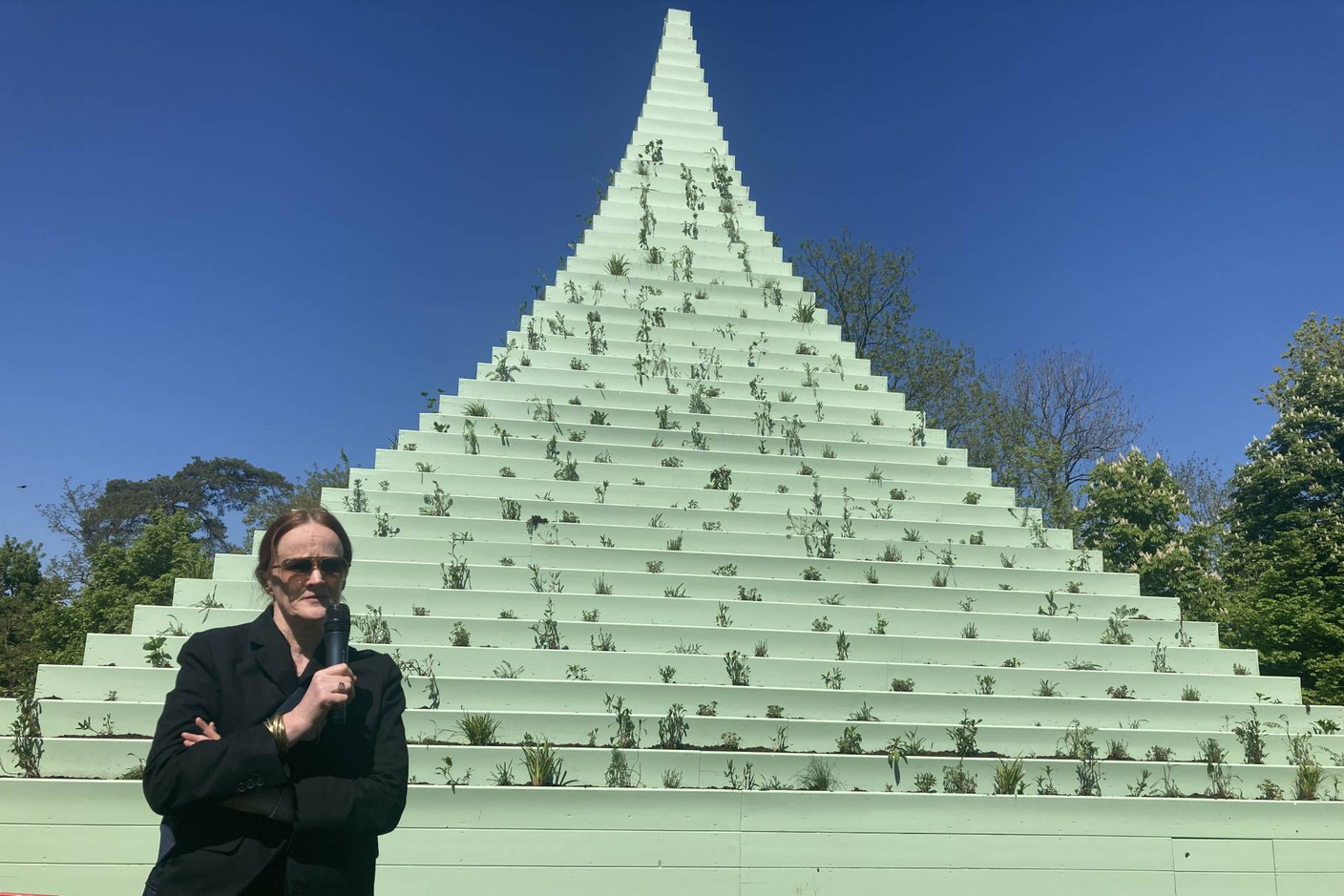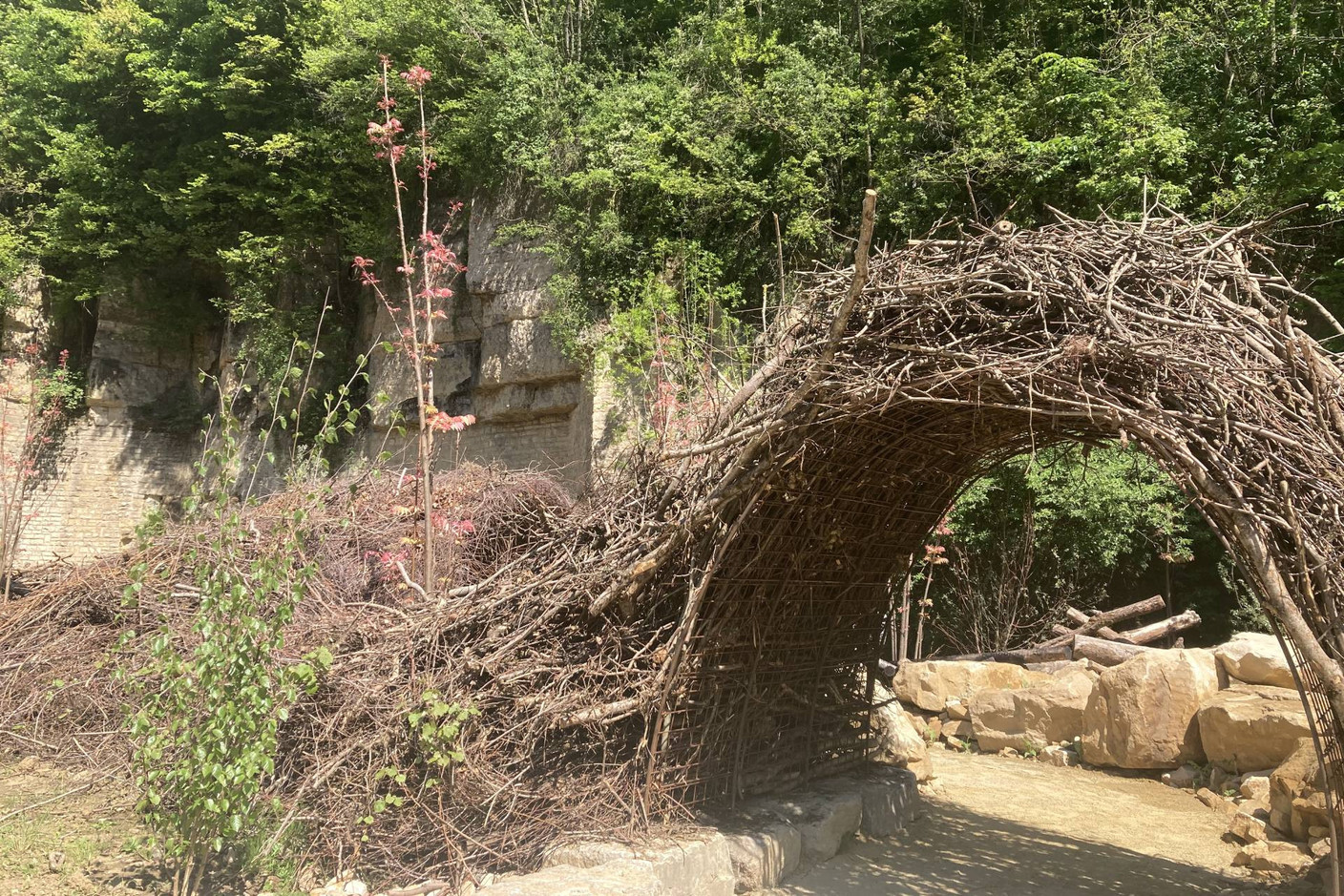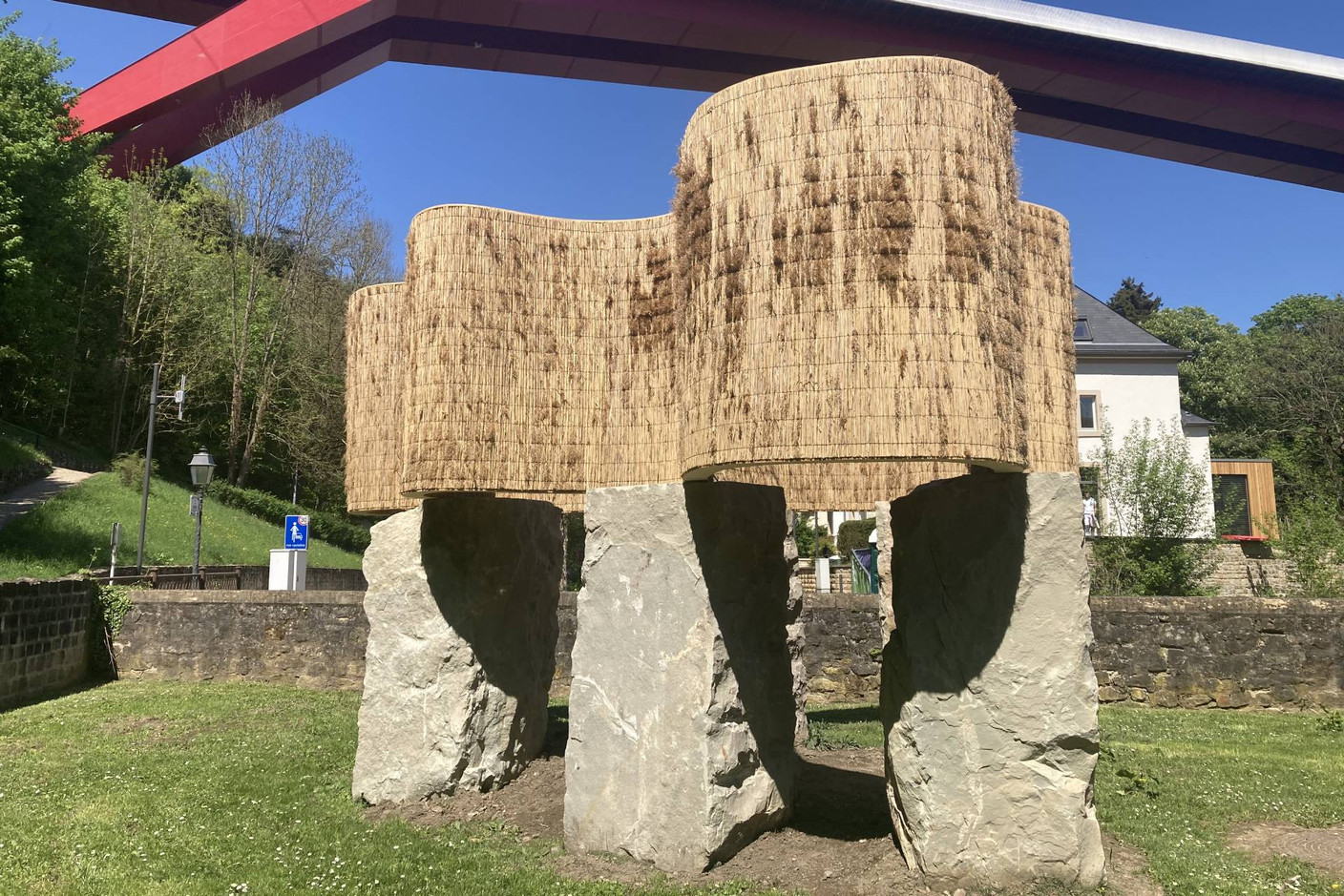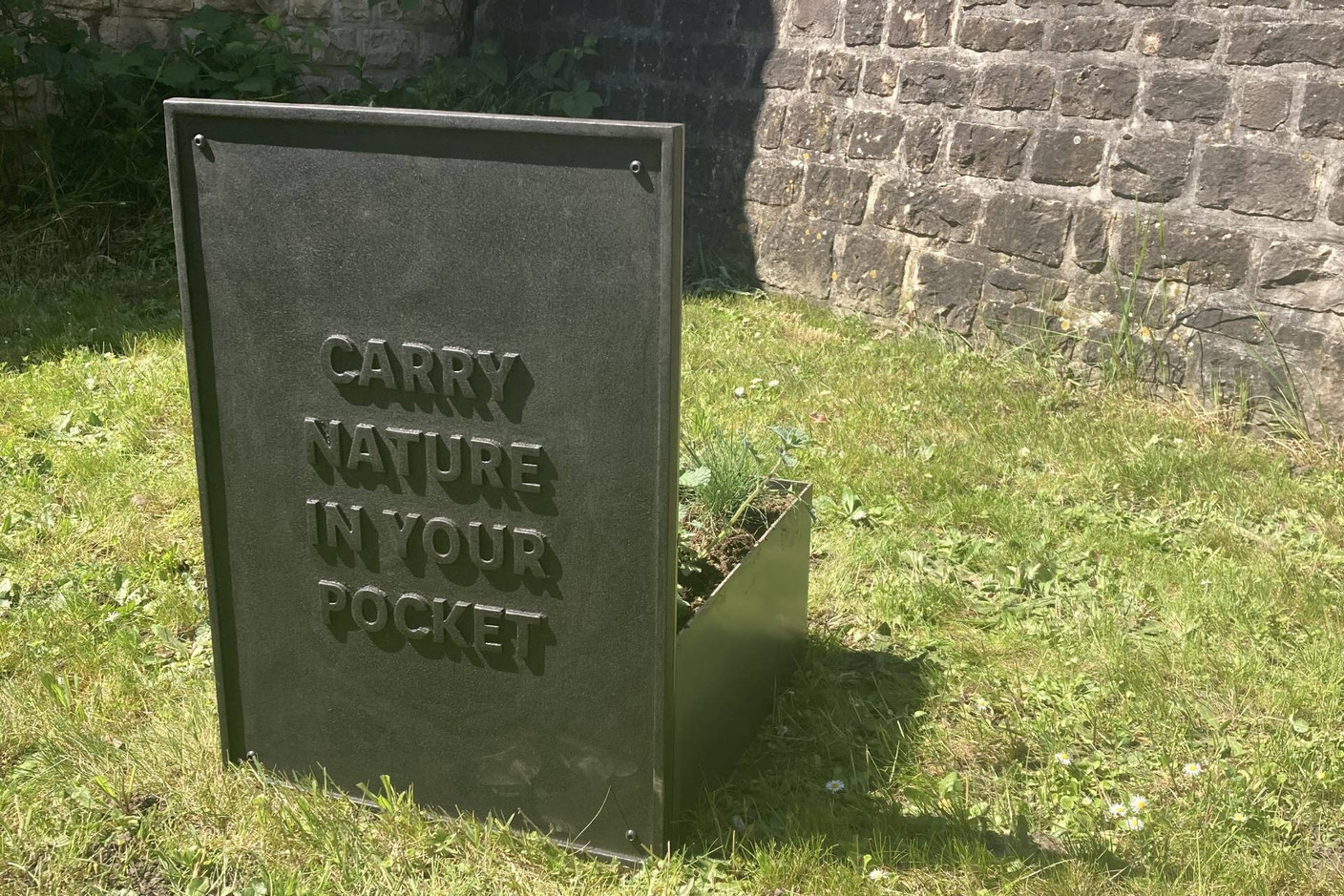Making the invisible visible is the theme chosen for this first edition of the Luga, a major event dedicated to the art of gardening and comprising landscape and artistic installations, agricultural projects and temporary living spaces. Luxembourg Urban Garden, aka “Luga,” is taking place simultaneously in Luxembourg City and Ettelbruck. The event calls to mind other major horticultural events in Europe like the Bundesgartenschau in Germany, Lausanne Jardins in Switzerland or the International Garden Festival in France.
An 11km loop
In the city, the project takes the form of an 11km route that follows the capital’s green belt and along which numerous urban gardens, works and installations can be discovered. The route forms a loop and crosses the municipal park, the Kirchberg, the Alzette Valley and the Pétrusse Valley. The tour can be done in one go by devoting a good day’s walk to it (we tested it: it’s a lot, but it’s magnificent, especially if the weather is good) or in several stages, by choosing to explore one area and then another. It’s also interesting to plan to return at different times of the year, because as the seasons progress, the installations will evolve in line with changes in nature.
“With Luga, we can highlight another face of Luxembourg, a face that is much older than that of the financial centre or even the steel industry,” says Ann Muller, general coordinator of Luga. “It is its landscape and agricultural character, a history that is still very much present.”
Along the way, visitors can discover installations by some of the great names in landscape art, such as Léon Kluge, a Luxembourger with an international reputation, who created the Life on the Verge installation for Luga just between the Villa Pétrusse and the entrance to the Pont Adolphe footbridge for pedestrians and cyclists. In the municipal park, it’s impossible to miss The Scream, a sculpture by Atelier Van Lieshout depicting a giant golden rooster; the incredible orchid collection at the Fondation Pescatore (a location chosen because Jean-Pierre Pescatore was, as well as being a knowledgeable art collector, a very large orchid collector); or a fascinating and experimental installation of bioluminescent plants that could be used in the future for night-time urban lighting.
A little further on, in Kirchberg, you can discover Aurel & Axel’s urban farm at Kuebebierg (created with the Fonds Kirchberg) or the highly poetic installation Endymion by Studio SNCDA and Jan Minne. The Mudam is also taking part with the impressive and emblematic The Living Pyramid by Agnes Denes, one of the first artists to question our relationship with the environment.
The Alzette valley boasts several urban garden projects by international landscape architects (selected following a call for projects), such as the fascinating After the Collapse, an almost post-apocalyptic garden with broken wood, falling rocks and nature reclaiming its rights, or the impressive Topotek 1 installation. A rest area with a bar has also been set up.
After Neimënster and the Nature Museum, where themed exhibitions linked to Luga are also set up, we move on to the Pétrusse Valley, home to gardens entrusted to ten young designers.
Fans of contemporary art will also want to check out the Luga Art Trail, a circuit devised by curator Boris Kremer around the theme of animals, several of whose works can be seen in this valley. The trail offers the chance to discover, among others, Gregor, a new work by Tsu-Mei Tse, Totems by Laurent Le Deunff or Blobby and Boo by Mary-Audrey Ramirez, whose mysterious animals are housed in the cavities of the Saint-Esprit casemates. For the experience, we also recommend taking part in the immersive work Everything Lies Beneath the Kepenek for which the artists invite visitors to cover themselves in a traditional shepherd’s coat made of thick wool and fitted with headphones to tell you a story linked to the theme.
And also in Ettelbruck
A highly complementary component to the urban offerings, the tour in Ettelbruck focuses more on showcasing agricultural offerings. “We have a lot of knowhow and excellent experts in our country that we want to showcase,” says Muller. “The Ettelbruck agricultural college, for example, is exemplary in its field. We drew on their skills and knowledge to create the Urban Agricultural Trail, which features botanical and agricultural exhibitions and demonstrations of innovative growing methods linked to food production.”
The trail starts at Ettelbruck station and continues either along the path that runs alongside the Alzette or through the pedestrianised area of the town centre. There’s also the corn maze, which children love to explore, and the not-to-be-missed Foire Agricole (4-6 July).
La Luga officially opens on Wednesday, 7 May, and an opening festival will be held on Saturday, 10 May in Luxembourg (at Kinnekswiss and around the Pergola in the Edouard André municipal park) and on Sunday, 11 May in Ettelbruck (Däichwisen) to give visitors a festive preview of the installations. But the programme doesn’t stop there, with over 1,500 events scheduled between now and October.
Luga runs from 7 May to 18 October. The full route and all events are available on .
This article in French.
